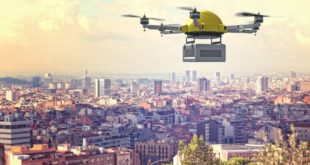NASA’s Astrobee robots—Honey, Bumble, and Queen—are preparing for a historic transition that signals the next stage in space robotics. Originally developed as free-flying autonomous assistants aboard the International Space Station (ISS), Astrobee is now poised to enter commercial territory. This change aligns with NASA’s broader goal to commercialize low-Earth orbit (LEO) and create a sustainable orbital economy where intelligent machines serve not only government missions but private enterprise too.
The Intelligent Crew of the ISS
Deployed in 2019, the cube-shaped Astrobee robots quickly became vital to ISS operations. Each robot uses electric ducted fans for propulsion in microgravity, enabling them to navigate autonomously through the station’s modules using visual-inertial odometry and Simultaneous Localization and Mapping (SLAM) algorithms. These advanced navigation systems allow Astrobee to perform precise maneuvers, avoid obstacles, and dock autonomously with recharging stations or experimental interfaces.
Astrobee’s propulsion and mobility systems are augmented by a 3-DOF compliant perching arm, enabling the robots to grip handrails and remain stationary without consuming energy. This functionality is crucial for long-duration tasks such as environmental monitoring or assisting with static experiments. Their onboard sensor suites include stereo cameras, IMUs, depth sensors, and acoustic sensors that support real-time environmental awareness and contextual adaptation—vital in a dynamically changing environment like the ISS.
Modular Design: A Platform for Science and Innovation
Astrobee’s flexible architecture is a game-changer for orbital R&D. Its three payload bays offer plug-and-play compatibility for scientific experiments, allowing researchers to install custom hardware without interfering with core robotic functions. These bays provide power and data connections, enabling seamless integration of specialized tools—ranging from RFID readers and gecko-inspired grippers to computer vision processors and autonomous docking modules.
NASA has used this platform to test critical technologies such as CLINGERS, a docking experiment that simulates spacecraft rendezvous, and REACCH, which supports robotic capture of space debris. These trials make Astrobee not just a tool, but a foundational testbed for future autonomous missions in cislunar space, Mars, or commercial habitats.
Astrobee also supports distributed robotic coordination experiments. In recent tests, multiple units were tasked with collaborating on dynamic challenges like inventory management and module mapping. These demonstrations validate swarm robotics principles in a real space environment—offering a preview of future deep-space missions where coordinated robotic fleets might build infrastructure or conduct joint surveys.
Reliability and Serviceability for Long-Term Missions
A defining strength of the Astrobee system is its engineering resilience. Over five years of operation, it has maintained a 95% uptime, with minimal repair needs. This durability stems from redundant control systems, modular internal components, and a maintenance model designed for in-space servicing. The robots can be diagnosed and partially reconfigured from Earth, enabling rapid troubleshooting and long-term sustainability without excessive astronaut intervention.
Astrobee is also future-proofed for ISS operations beyond 2030. NASA has stockpiled spare parts and developed service protocols to keep the system running even as station operations evolve. By offering low overhead costs and consistent performance, Astrobee exemplifies the type of autonomous system needed to maintain and monitor orbital assets when human presence is limited or intermittent.
Gateway to Future Missions: The Broader Implications of Astrobee
Astrobee’s legacy will not end with the ISS. The technologies it hosts—from SLAM-based navigation to zero-g robotic manipulation—are directly applicable to missions beyond low-Earth orbit. On lunar gateways or Martian transit habitats, similar robots could perform routine maintenance, monitor life support systems, or even prepare infrastructure ahead of crew arrival.
In commercial settings, Astrobee’s descendants could provide “robotics-as-a-service” aboard private stations like Axiom and Starlab, where astronaut time is costly and limited. Furthermore, its algorithms are already feeding into orbital debris capture initiatives, suggesting a role in actively mitigating space junk—a growing concern for all orbital stakeholders.
Astrobee also acts as a conduit for Earth-based innovation. Through its support for STEM competitions, guest science programs, and open-source simulation environments, it encourages universities and startups to test ideas in space. Its success proves that robotic systems can be both functional and accessible, laying the groundwork for a new class of in-space commercial services driven by AI, autonomy, and remote operation.
Conclusion: Enabling the Orbital Economy
NASA’s decision to commercialize Astrobee marks a major milestone in space robotics. By opening this proven platform to private entities, NASA is not just offloading operations—it is inviting innovation, entrepreneurship, and long-term sustainability. Astrobee has already shown that robots can be trusted crew members in orbit. Now, as it transitions into commercial stewardship, it promises to become a linchpin of the orbital economy—servicing future stations, exploring new frontiers, and reshaping what’s possible in the final frontier.
 International Defense Security & Technology Your trusted Source for News, Research and Analysis
International Defense Security & Technology Your trusted Source for News, Research and Analysis

